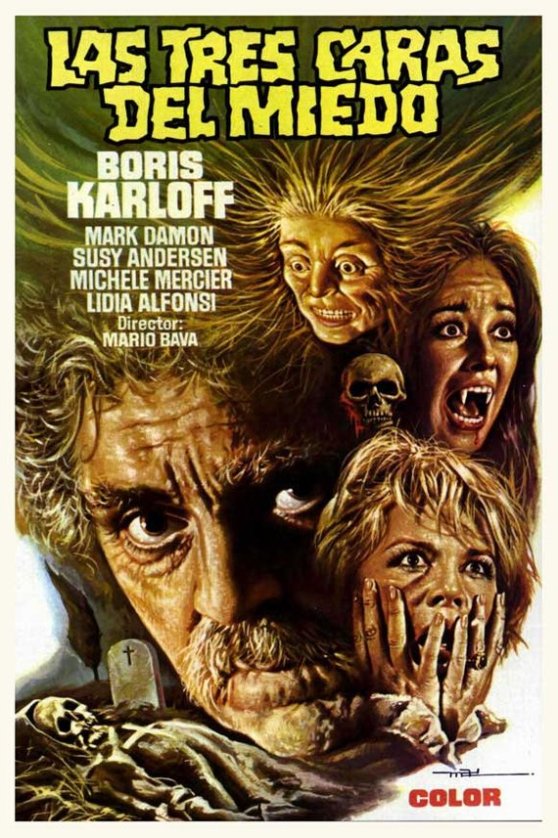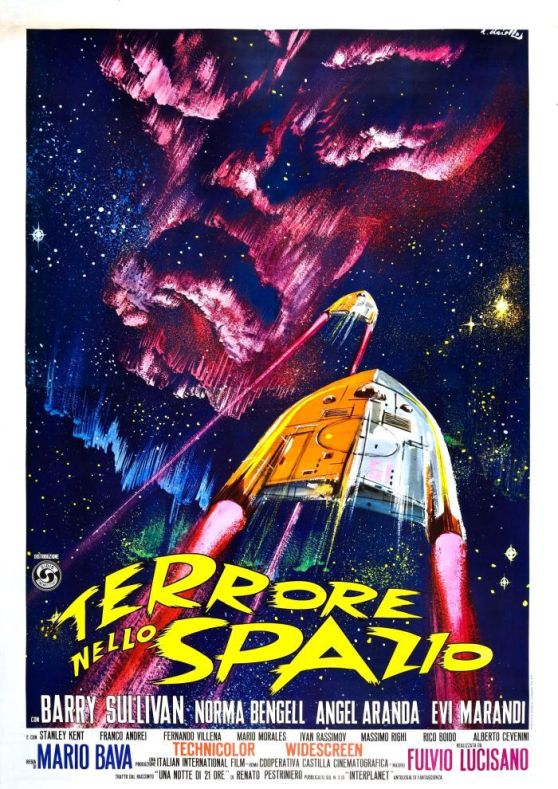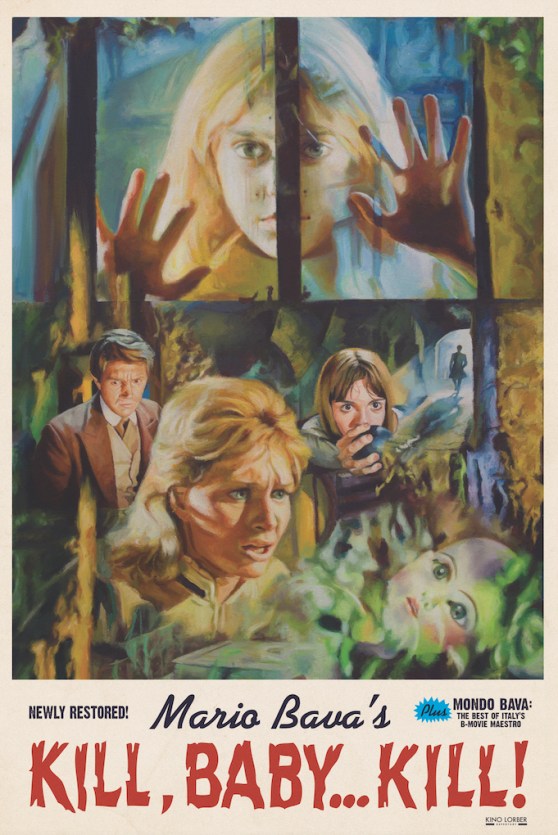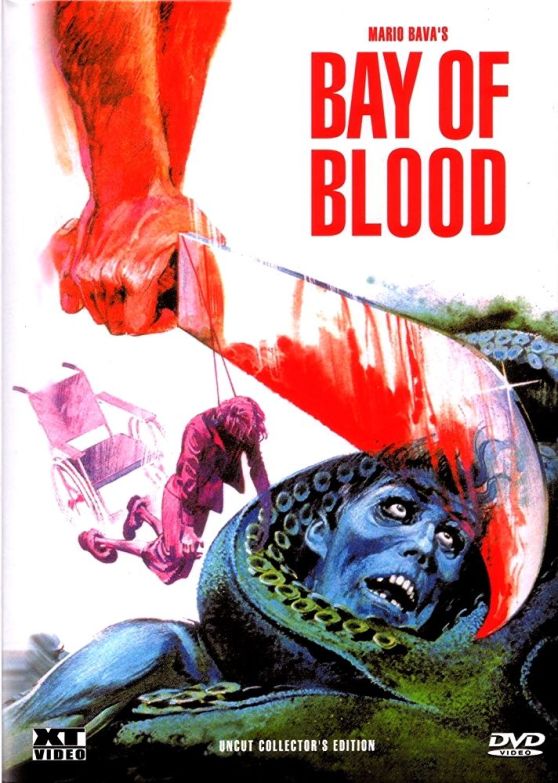Whenever I get down, I just remember that this world produced Mario Bava and his incredibly rich body of work. Who could go from Hercules movies to spy spoofs to gothic horror, then find time to invent both the giallo and the slasher?
The son of Eugenio Bava, who worked as a special effects photographer and cameraman, Mario began working as a cinematographer in 1939. He shot short films with Roberto Rossellini and worked alongside his father, creating special effects in Benito Mussolini’s Istituto Luce, which still exists today.
You can see his cinematography and special effects work in 1955’s Kirk Douglas starring Ulysses and 1957’s Hercules, which introduced Steve Reeves to the world. These movies are instrumental in kickstarting Italy’s peblum –or sword and sandal — film genre.
His first film as a director was I Vampiri (The Devil’s Commandment) in 1956, which he completed after its original director Riccardo Freda left midway through shooting. This is considered Italy’s first horror film. Bava also co-directed The Day the Sun Exploded, which is Italy’s first science fiction movie.
Bava again stepped in for Freda after he left the set of Caltiki the Immortal Monster, a movie that he received no credit for. After working on the lighting and effects for Hercules Unchained and The Giant of Marathon, Bava would finally step into the limelight.
His 1960 gothic horror tour de force Black Sunday introduced the world to Barbara Steele, but also loudly screamed that Bava was a force to be reckoned with. He followed that with a slew of horror films that embraced every color in the spectrum — and then some — with movies like Black Sabbath, Kill, Baby… Kill! (which Martin Scorsese has referred to as a masterpiece; it would also go on to influence Japanese horror), Lisa and the Devil, Shock and Baron Blood.
Always an innovator, Bava’s films The Girl Who Knew Too Much and Blood and Black Lace are considered the progenitors of the giallo film, while his ultraviolent A Bay of Blood so influenced the slasher film that parts of Friday the 13th Part Two are ripped off shot for shot from it.
Throughout his career, Bava would go from the highest heights to crushing disappointments, with some films like the aforementioned Lisa and the Devil and Rabid Dogs struggling to even be shown theatrically.
Bava’s lighting, camera movements and sense of style can never be duplicated. However, his influence can be seen in nearly every Italian film that came in his wake, as well as the movies of John Carpenter, Tim Burton, John Landis, Francis Ford Coppola (just watch Bram Stoker’s Dracula) and Guillermo Del Toro (Crimson Peak feels like a mix of Bava and other gothic films from Hammer).
It’s hard to boil down Bava’s oeuvre to just ten films, but my goal is to show his versatility and willingness to work in any genre to make art.

1. Black Sunday (1960): Most movies would be satisfied with being as good as the opening of this film, where the supernaturally alluring visage of Barbara Steele has a spiked mask pounded onto it while blood pours from the eyes. But no — Bava was just getting started. Its startling set pieces, such as Steele and her hounds walking through fog, have been imitated but never duplicated by directors like Burton, Coppola and Richard Donner.

2. Hercules in the Haunted World (1961): Here, Bava defies budget, delivering a movie that truly feels like it was shot on location in the days of Greek gods. Swirls of fog, day glo skies and giant rock formations that may be fake but seem imposingly real are just part of the recipe completed by Christopher Lee and a script that easily bests every other sword and sandal epic.

3. The Girl Who Knew Too Much (1963): With this detective tale, starring Leticia Roman and an incredibly young John Saxon, Bava started took the German mystery novel that giallo was inspired by and brought it to the screen. This was just the seed of the future that was planted and would be further watered by another film down the list.

4. Black Sabbath (1963): This portmanteau film did more than inspire fright. Its name on a marquee led to a band in Birmingham, England to change their name from Earth to this. The rest was history. It also influenced a movie that you would not expect. Quentin Tarantino, when making Pulp Fiction, said that “what Mario Bava did with the horror film in Black Sabbath, I was gonna do with the crime film.”

5. Blood and Black Lace (1964): Remember that whole invention of giallo idea thrown about earlier? This is where it really happens. The entire psychosexual, high fashion, neon-hued world that Argento would push to the rest of the world begins here, a film packed with menace, style and sex. It’s still shocking today, more than half a century later. A near perfect film, it was actually a bomb upon release and was considered too intense for American release.

6. Planet of the Vampires (1965): If you ever wonder where Alien got its inspiration, look no further. Bava was again forced to take a low budget and make high art, with nearly all of the film’s effects done in camera. The maestro said, “Do you know what that unknown planet was made of? A couple of plastic rocks left over from a mythological movie made at Cinecitta!” Between process shots, miniatures, neon colors and no small amount of fog and mist, this is how science fiction should appear.

7. Kill, Baby, Kill! (1966): For a movie that would go on to inspire Fellini, Argento’s Suspiria and Scorsese’s The Last Temptation of Christ, Bava had to endure bad luck throughout filming, such as the production running out of money two weeks into being filmed. Everyone loved Bava so much that they stayed on and finished the film. There was so little budget that to get the effects that he wanted, Bava used a seesaw instead of a crane and went back to the silent movie era effects that his father had taught him. The bad luck continued when this film ran for only four days. History has proven it to be a success, but Bava stopped making horror films for years until Hatchet for the Honeymoon.

8. Danger: Diabolik (1968): You may notice that I throw around hyperbole in this article, using phrases such as “a perfect movie.” Is there such a thing? When it comes to Mario Bava, the answer is yes, several times. Bava had already worked in the spy genre with 1966’s Dr. Goldfoot and the Girl Bombs (a movie that’s a sequel to two unconnected movies at the same time, Dr. Goldfoot and the Bikini Machine and Two Mafiosi Against Goldginger), but here he takes James Bond-era gadgetry to its highest peaks and creates what may be the most well-made of all superhero movies now and forever.

9. A Bay of Blood (1971): Also known as Twitch of the Death Nerve amongst many, many other titles, this film upset nearly every one of Bava’s biggest fans, such as Christopher Lee, who had starred in his film The Whip and the Body. Taking Blood and Black Lace‘s murders to the next level — and beyond — this is the movie that gave birth to the slasher. It’s nihilistic, gory and unafraid to murder nearly every single character in its cast. It’s also completely awesome.
Honestly, at this point, it’s hard to pick the last film. I adore Baron Blood, a film whose international success brought Bava back to the forefront of horror cinema. I dig Five Dolls for an August Moon, his Agatha Christy cover movie. And I can go on and on about the power of Shock, his last theatrical effort. But there can only be one pick.

10. Lisa and the Devil (1972): After the success of Baron Blood, Bava was given full creative control of this movie, which sadly flopped in Italy and was retitled House of Exorcism in the U.S. The twenty new minutes of the film that rips off The Exorcist had nothing to do with Bava. Another heartbreak in a career of them, today this movie is seen much differently than it was upon release and it prefigures Argento’s move from the giallo to the supernatural.
I have one bonus film that you may or may not know had Bava’s involvement. 1980’s Inferno is the spiritual successor to Argento’s Suspiria. The director was stricken with a painful case of hepatitis and often directed lying on his back. To cover for him and help his son Lamberto, Bava was the second unit director, camera operator, lighting technician and special effects man for this movie, creating all of Inferno‘s optical effects, matte paintings and trick shots.
Hopefully, this list helps you discover Bava’s films or go back and enjoy them again. Do you have a favorite that I missed? Please tell us about it in the comments!
Fantastico! Wonderful retrospective on the master. You got the Bava essentials in there. My love for Planet of Vampires and Lisa and the Devil is unbound. The other is Shock.
Lisa and the Devil and Shock are incredible and essential classic horror viewing.
LikeLike
Pingback: Ten Sergio Martino films – B&S About Movies
Pingback: Ten Larry Cohen films – B&S About Movies
Pingback: Panic Beats (1983) – B&S About Movies
Stunning list!
LikeLike
Great list and descriptions..hands dwn my all-time favorite director!! His horror output is supreme, but I love it all!! Re: not on your list– La Frusta e il Corpo (The Whip and the Body) has got to be my favorite! You can pause any frame in that film, and hang it on a wall.. it’s a fkn painting come to life!! (Make sure to get the German release DVD with correct color timing and Technicolor supervised by the maestro__ all subsequent releases have awful color and a muted pallette. For a film that evokes emotions thru use of color, it’s the only version to have!!) I get lost in that film every time…so haunting and hypnotizing.. also really love Gli Invasori (The Invaders), better known in the US as Erik the Conqueror! Brilliant action, color and score.. along with all his wonderful effects!! Thanks again for a great article!! Bava for Life!!…and Death! 😉
LikeLike
I had no idea about Bava’s iNFERNO involvement. It’s awesome, a nice bookend to his career covering for Freda.
LikeLike